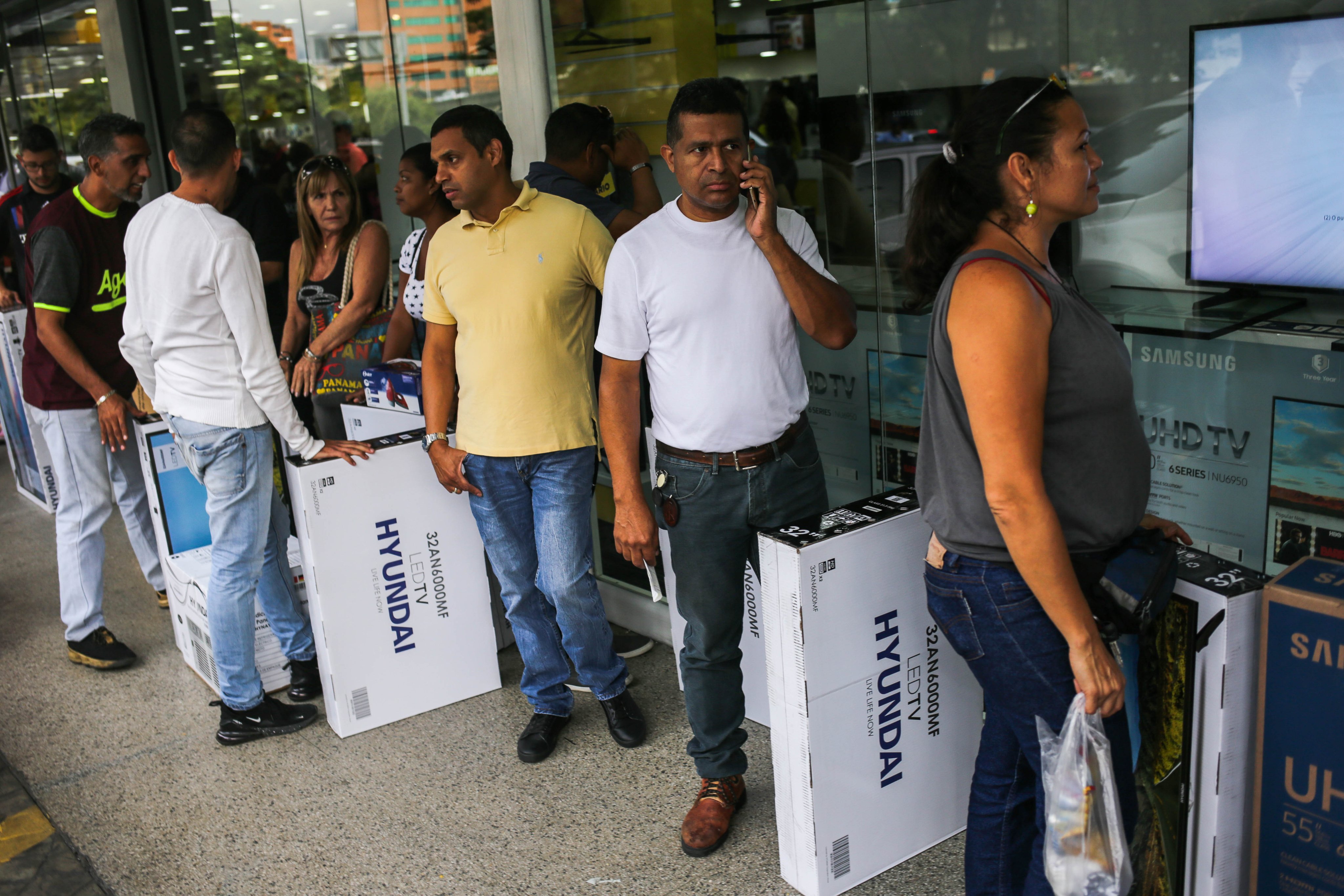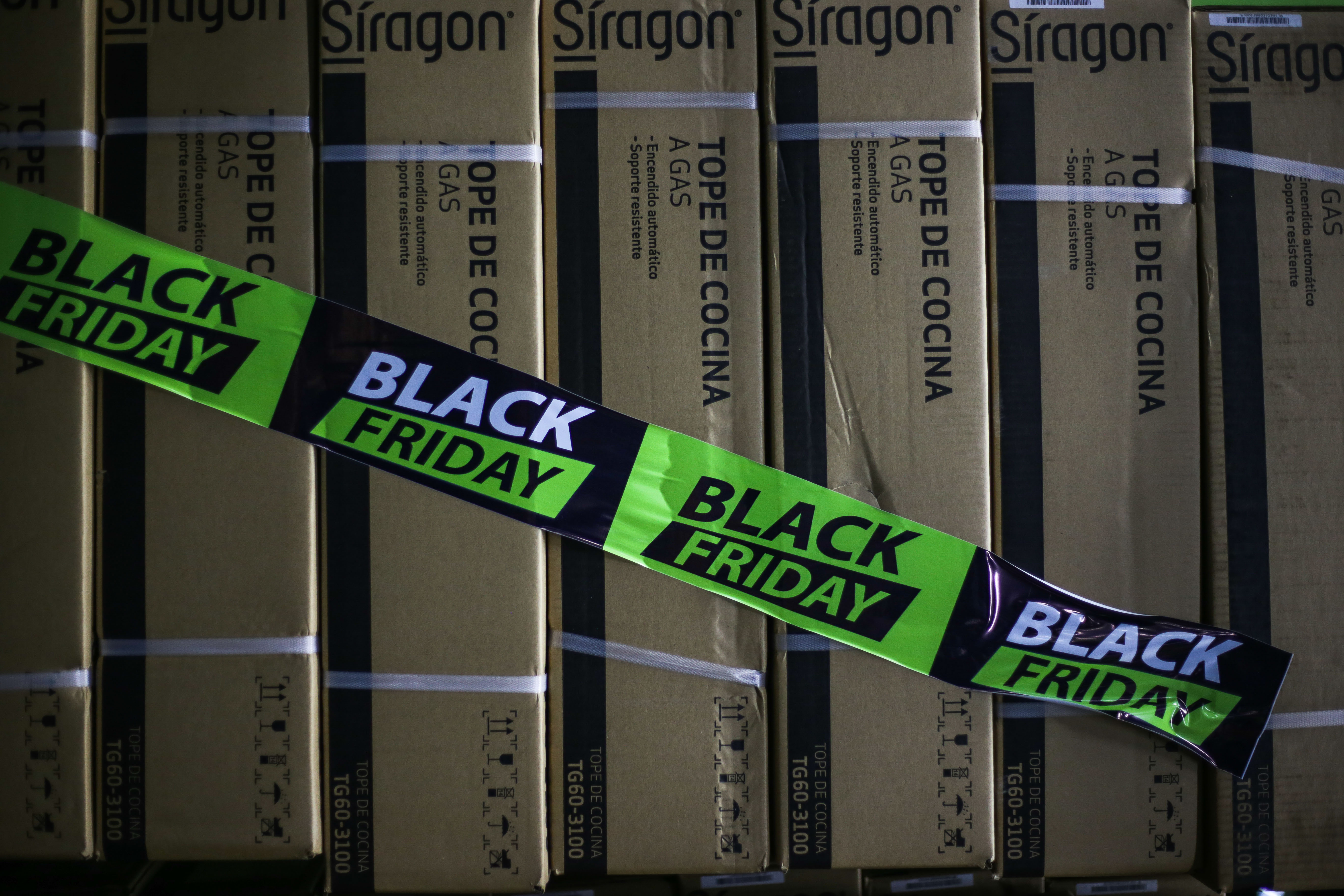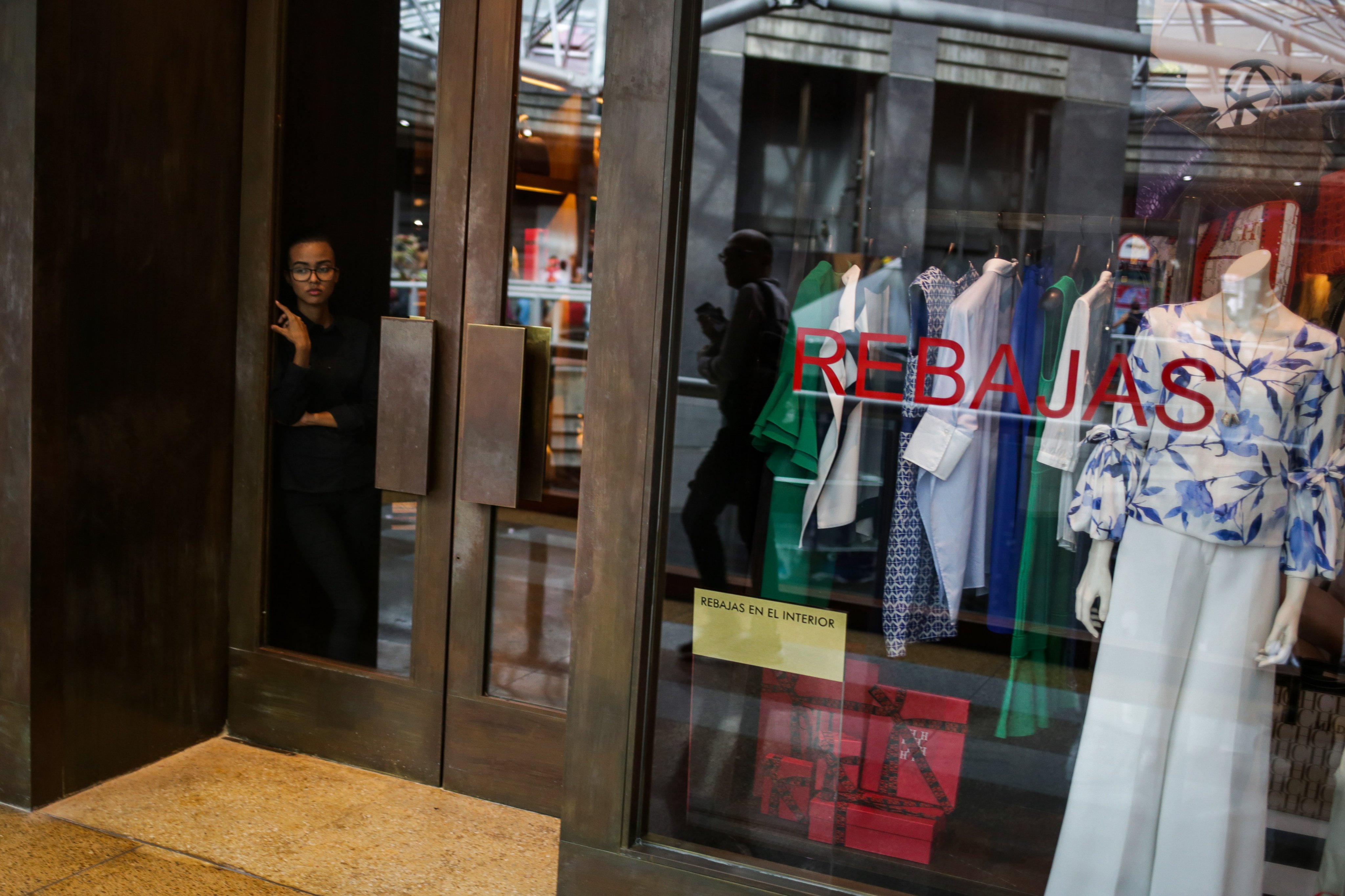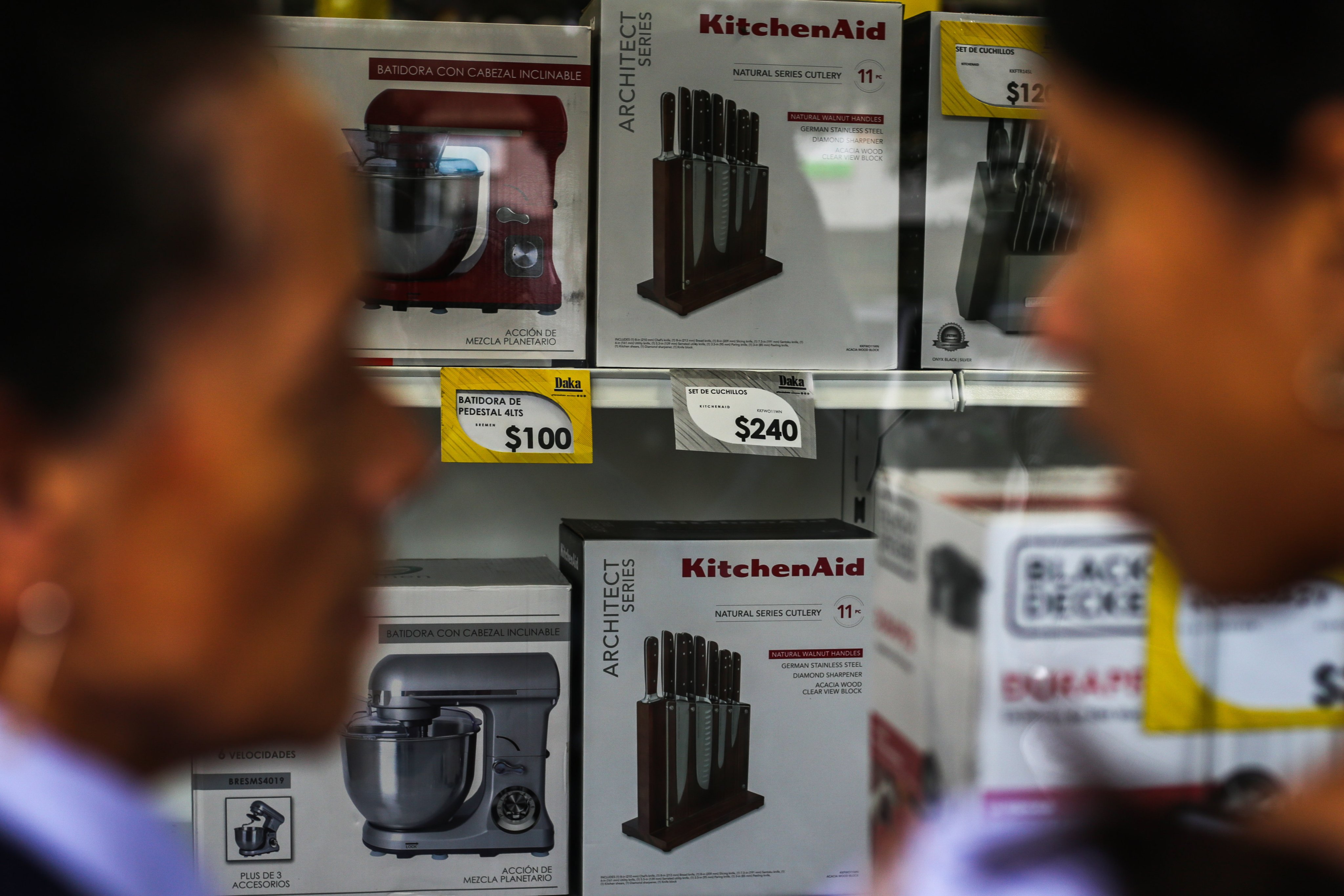Notes From The Venezuelan Black Friday Battlefront
Cash dollars made possible an illusion of recovery in the capital of the world’s worst-performing economy. Here’s how things looked in the Sambil mall


Photos: Cristian Hernández
At 4:00 p.m., Centro Sambil -in East Caracas- was, for the first time in a long time, the same mall we remembered and secretly hated: overcrowded, noisy and impossible to walk through. Black Friday was in full swing and people came to see what was it all about.
Heavily marketed through social media and even TV spots, it was both an experiment and a pact: stores and mall officials sat down and decided to gamble on a weekend-long strategy to lure customers by lowering prices, said Zora Rodríguez, Sambil’s press officer. By the time the sun came down, it was pretty clear it paid off.

Black Friday was in full swing and people came to see what was it all about. Photo: Cristian Hernández
“It’s more a marketing strategy to drive up sales, but it’s only for a few people”, said Ecoanalitica’s Asdrúbal Oliveros. There were rebates, make no mistake, but most of the items were tagged with the new unofficial currency of Venezuela: the United States dollar. Sales in dollars represent now 54% of the total transactions in the seven largest cities in the country, according to Ecoanalitica’s October report.
By 7:00 p.m. one shoe store had registered a thousand sales and a men’s clothing store, 300. Those numbers were comparable with the total sales of one month.

Heavily marketed through social media and even TV spots, it was both an experiment and a pact: stores and mall officials sat down and decided to gamble on a weekend-long strategy to lure customers by lowering prices. Photo: Cristian Hernández.
Black Friday on a budget
Luisa Pérez, 19, and her mother, arrived early at the mall. They waited in line for the doors to open and went straight to the lower level of the mall to buy a pair of sneakers, one bluejean, and one blouse. Her budget? One hundred dollars. She researched the shoes and the pants last week -they were priced at 72$ and 30$- and calculated that the Black Friday sales could easily made her buy the trifecta. She was right: 52$ for her new white Adidas and 22$ for the jeans, so she could also afford the pink flowery blouse that she “loved”. Also, she ended up with some change in her pocket: 3$ for a movie ticket.

Most of the items were tagged with the new unofficial currency of Venezuela: the United States dollar. Sales in dollars represent now 54% of the total transactions in the seven largest cities in the country, according to Ecoanalitica’s October report. Photo: Cristian Hernández.
Others saved for months. Zuleidy García, 33, wanted to buy new shoes for herself and her five-year-old son and decided to work overtime going to her neighbors’ houses to give injections for one dollar. She saved 75$ over the last three months. She was all smiles with her only purchase of the day. “I wanted to buy him a new pair of shoes to go to school since September, but couldn’t afford them. Now, I was able to buy a pair for him and a pair for me,” she said as she walked away, looking for the exit.
High-end stores also had Black Friday prices, but no lines outside: the dependant over at Carolina Herrera’s store was looking through the door and checking her cell phone as a couple of customers tried on some clothing. Over at Mario Hernández, a Colombian luxury chain, three gentlemen were asking for wallets as they scanned suitcases.
Women’s clothing and shoes were the most sought items at Sambil. A person could wait in line for more than an hour just for a chance to enter a store. One bag was the common denominator. People came to buy on a tight budget. The magic number: one hundred, tops.
It’s a (bubble) trap!

High-end stores also had Black Friday prices, but no lines outside: the dependant over at Carolina Herrera’s store was looking through the door and checking her cell phone as a couple of customers tried on some clothing. Photo: Cristian Hernández.
By sunset, over at VTV, Maduro regime officials and operators were praising Black Friday as a sign of a flourishing economy, with people having money to spend on vane stuff. Although it’s true that the “transactional dollarization” has become a lifeline for sales, the numbers still look grim, with an estimated contraction between 30 % and 40 % for 2019.
“Black Friday can be interpreted as the intersection of two things,” explained Felipe Capozzolo, president of the Caracas Chamber of Commerce, “on one side we are living a transactional dollarization in some bubbles and some levels of society with access to hard currency, and on the other side we see a consumer market that is starting to work again with supply and demand as hyperinflation does not affect the dollar the same way as it does the bolivar, so any opportunity is good to offer lower prices, attract customers and increase sales.”
Henkel García, director of the consulting firm Econometrica, emphasized that this Black Friday phenomenon was “very focalized” in Caracas and “it doesn’t translate into an increase of customer sales (…) even though it’s different from things we’ve seen before.”
What did we see before? A government that forced stores to lower their prices, with tax administration agents from Seniat and the police by the door: it was 2013 and people called it the “Dakazo.”
A new kind of Dakazo

A cookware set had a price tag of 300$ and a Panasonic bluetooth sound system could be purchased for 450$, way up from Amazon.com prices. Photo: Cristian Hernández.
On November 8th, 2013, Nicolás Maduro ordered the occupation of Daka, a chain of appliance stores, arguing that the owners were using dollars obtained through Sicad (a kind of preferential dollar) to import home appliances but they were selling them at black market dollar prices. “I have immediately ordered the occupation of Daka so we can put products for sale for the people at a fair price. Leave nothing on the shelves!” said the President on national TV.
Today, Daka lowered their prices and people came, in order, to buy whatever they wanted. The store saw hundreds of people waiting in line, but the police was there only to ensure traffic would not collapse the tiny street between Bello Monte and Las Mercedes. The line was half a block by 5:00 p.m. but it was larger at noon. The star of the day? A 32-inch LED TV with a sale price of 100$.
Carlos Rubio went there to replace his bedroom television, a victim of the March blackouts. He used his Christmas bonus (60$, paid in cash) plus some savings. The same TV went on sale in Colombia for 133$, he googled before coming to the store. “And I had the chance to choose it myself and drive it home,” said as he waited in a line to test his new screen.

Most buyers were on a budget and saved for months before the Black Friday. Photo: Cristian Hernández.
Other appliances didn’t have Black Friday prices. A cookware set had a price tag of 300$ and a Panasonic bluetooth sound system could be purchased for 450$, way up from Amazon.com prices.
A mile away, at Ivoo -local brand Siragon’s flagship store- Black Friday was also underway (one product per customer). TVs were also the hot items for sale. At 129$, the 32-inch TV came with a basic 2,4-inch cell phone included. People were looking at home theaters and refrigerators, but mostly came out with a new TV screen.
By 8:00 pm, Sambil was fully packed. A DJ welcomed customers at the doors and two more were placed at the mall’s main plazas. The food court was packed. Cell Phones didn’t have data reception. Taxis came and went, their best day in the last five years, according to the drivers. It seemed like the early 2000s again, exactly the feeling the regime wanted to achieve: everything’s fine again, see why you need to stick with Maduro?
But just for a day, maybe for a weekend, and only if you had dollars in your pockets.

Black Friday was in full swing and people came to see what was it all about. Photo: Cristian Hernández.
Caracas Chronicles is 100% reader-supported.
We’ve been able to hang on for 22 years in one of the craziest media landscapes in the world. We’ve seen different media outlets in Venezuela (and abroad) closing shop, something we’re looking to avoid at all costs. Your collaboration goes a long way in helping us weather the storm.
Donate




